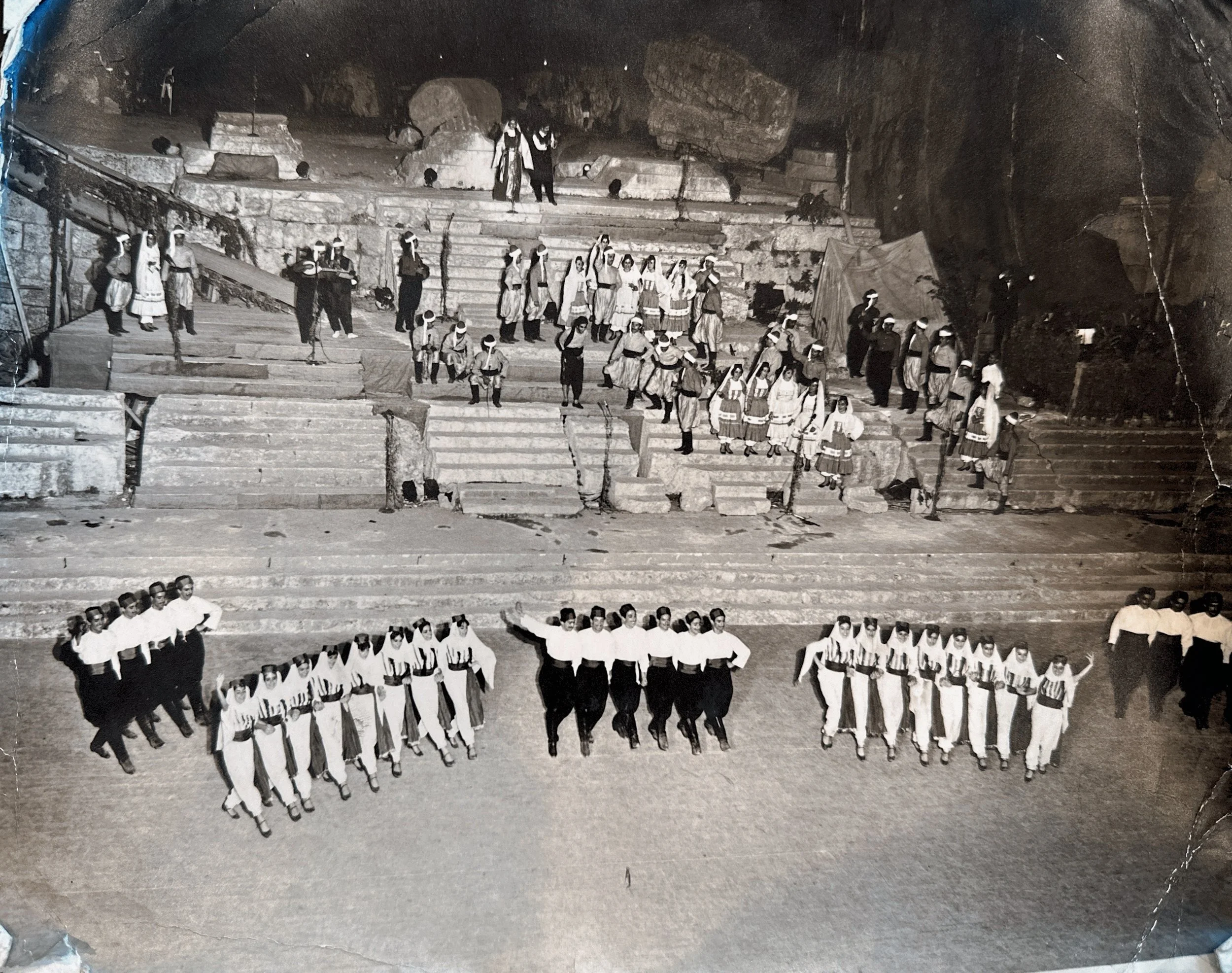A Life in Art and Motion
From Ballet to Canvas: A Journey of Expression
Born in Beirut, Lebanon, on August 4, 1941, Yolanda Sananes was destined for a life of artistic expression. From an early age, she demonstrated a deep passion for the arts, excelling in both classical and folkloric ballet. As the Principal Dancer of the Lebanese Folkloric Ballet, she graced international stages, sharing the beauty of Middle Eastern dance with audiences worldwide.
Her travels led her to Paris and then São Paulo, Brazil, where she met and married Josef Emil Oppenheimer, building a new life as a mother and artist.
A New Chapter in Argentina: Art as a Bridge Between Cultures
In 1970, Yolanda settled in Argentina, where she transitioned from the world of dance to the visual arts. Under the mentorship of Justiniano Garcia and muralist Maria Szekely, she developed a distinctive painting style that reflects both movement and cultural storytelling.
Her work is deeply rooted in the themes of inter-religious unity and peace between people. Through her paintings, she weaves together symbols of Judaism, Islam, and Christianity, presenting a harmonious coexistence of faiths. She once stated, “I always try to seek the interrelation of beliefs.” This theme is particularly evident in her pieces that depict rabbis, Bedouins, mosques, and cathedrals, all coexisting within a shared artistic space.
Another recurring theme in her work is the importance of ethnic working women in sustaining home life and family. Yolanda’s paintings often pay tribute to the labor, resilience, and grace of Middle Eastern and Latin American women, highlighting their crucial role in shaping both household and cultural traditions.
Structuring Motion: A Balance Between Precision and Expression
As an artist, Yolanda initially adhered to structuralist principles, composing her paintings with a meticulous sense of order—geometric patterns, carefully balanced compositions, and restrained color palettes. However, over time, she allowed for greater expressive freedom, blending structured forms with fluid, spontaneous gestures inspired by dance and motion.
Her background in ballet is evident in her visual work—movement pulses through her compositions, whether in the sweeping arcs of architectural forms or in the dynamic contrasts of color. As one critic observed, “Yolanda replaces music with color, pianos with lines, and spaces with rhythm.”
Her paintings also reflect a deep connection to Middle Eastern architecture, featuring arches, domes, and intricate tile-like structures reminiscent of ancient cities. This architectural influence merges with abstraction in her works, creating a timeless dialogue between past and present, tradition and modernity.
Art, Conservation, and Legacy
Beyond her creations, Yolanda worked at Fundacion Tarea an institution dedicated to art conservation. Her dedication to both creating and safeguarding art underscores her belief in the importance of cultural heritage.
Her work has been exhibited in galleries such as Buen Ayre Gallery, where critics praised her ability to merge structured abstraction with the fluidity of movement. Her evolving style reflects a tension between discipline and spontaneity, mirroring both her artistic training and her personal journey across cultures.
Life in New York City
Since 2019, Yolanda has been residing in New York City, where she remains close to her children and grandchildren. She cares for her grandchildren and stays always true to her core themes of cultural diversity, unity, movement, and the enduring strength of women.






Contact
Fill out some info and we will be in touch shortly.
